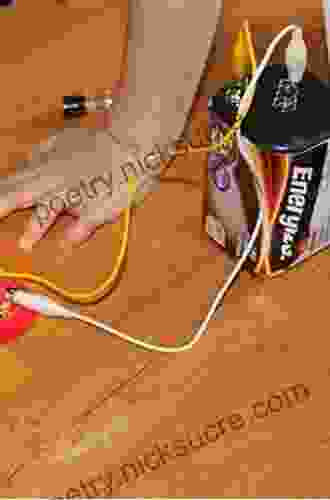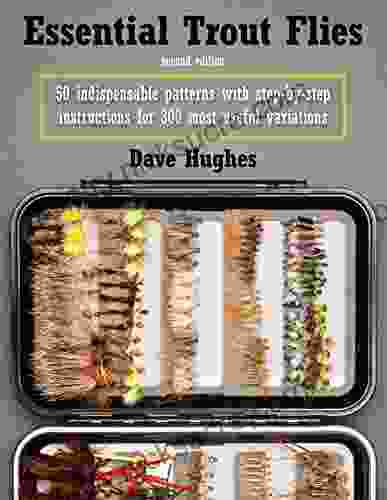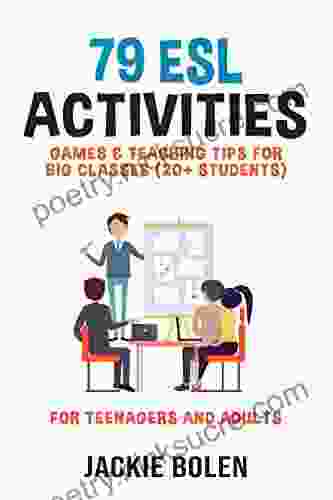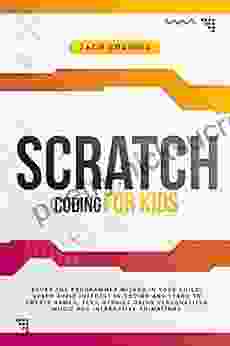Immersive Hands-On Electricity Experiments: Unraveling the Mysteries of Electrical Phenomena

Electricity, the flow of charged particles, powers our everyday lives and fuels technological advancements. Understanding electricity is crucial for navigating our modern world. But how do we make learning about this complex concept both engaging and accessible? Through hands-on experiments, of course!
4.4 out of 5
| Language | : | English |
| File size | : | 8744 KB |
| Text-to-Speech | : | Enabled |
| Screen Reader | : | Supported |
| Enhanced typesetting | : | Enabled |
| Print length | : | 412 pages |
In this article, we present a collection of captivating electricity experiments that you can easily perform at home. These experiments, suitable for various ages and levels of scientific expertise, will ignite curiosity and foster a deeper understanding of electrical principles. Prepare to be amazed as you witness the wonders of electricity unfold before your very eyes!
Experiment 1: Dancing Raisins
Materials:
- Clear glass or plastic container (e.g., jar, beaker)
- Water
- Salt
- Raisins
- Two electrodes (e.g., metal spoons, coins)
- Battery (9-volt recommended)
Instructions:
- Fill the container with water and dissolve a generous amount of salt into it.
- Drop a few raisins into the saltwater.
- Connect the electrodes to the battery terminals and immerse them in the saltwater solution, ensuring they do not touch each other.
- Observe the raisins. They should start to "dance" and move around erratically in the water.
Explanation:
In this experiment, the saltwater acts as a conductor of electricity. When the battery is connected, it creates an electric field between the electrodes. The salt ions in the water become charged and move towards the oppositely charged electrodes, dragging the raisins along with them. This movement creates the illusion that the raisins are dancing.
Experiment 2: Homemade Electromagnet
Materials:
- Iron nail
- Copper wire (insulated, about 1 meter long)
- Battery (9-volt recommended)
- Small metal objects (e.g., paper clips, tacks, coins)
Instructions:
- Wrap the copper wire around the iron nail tightly, making sure the turns are close together and cover the entire length of the nail.
- Leave about 10 cm of wire at both ends for connecting to the battery.
- Connect the ends of the wire to the terminals of the battery.
- Bring the electromagnet (the wrapped nail) near the small metal objects.
Explanation:
When the battery is connected, an electric current flows through the copper wire wrapped around the nail. This creates a magnetic field around the nail, turning it into an electromagnet. The magnetic field exerts a force on the metal objects, causing them to be attracted to the electromagnet.
Experiment 3: Lemon Battery
Materials:
- Lemon
- Two nails (galvanized or stainless steel)
- Copper wire (insulated, about 1 meter long)
- Voltmeter (optional)
Instructions:
- Insert one nail into the center of the lemon.
- Insert the other nail about 2 cm away from the first nail.
- Connect one end of the copper wire to each of the nails.
- Use the voltmeter to measure the voltage between the two nails. You should see a small voltage reading (around 0.5 to 1 volt).
Explanation:
The lemon acts as an electrochemical cell. When the nails are inserted into the lemon, they create a chemical reaction that generates a small amount of electricity. The copper wire provides a path for the electrons to flow, creating a circuit.
Experiment 4: Electric Motor
Materials:
- Two D batteries
- Copper wire (enameled, about 1 meter long)
- Strong magnet
- Small piece of cardboard
- Pushpin
Instructions:
- Wrap the copper wire around the cardboard to form a coil, leaving about 10 cm of wire at both ends.
- Attach the ends of the wire to the terminals of the batteries.
- Place the magnet on one side of the coil.
- Push the other end of the cardboard through the coil so that it can spin freely.
Explanation:
When the battery is connected, an electric current flows through the copper wire coil. This creates a magnetic field around the coil, which interacts with the magnetic field of the magnet. The interaction between the two magnetic fields causes the coil to spin.
Experiment 5: Static Electricity
Materials:
- Balloon
- Piece of wool or fur
- Small pieces of paper or hair
Instructions:
- Rub the balloon with the wool or fur to create static electricity.
- Hold the charged balloon near the small pieces of paper or hair.
- Observe how the paper or hair is attracted to the balloon.
Explanation:
When the balloon is rubbed, it loses or gains electrons, giving it a net electric charge. The charged balloon then exerts an electrostatic force on the neutral paper or hair, causing them to be attracted to the balloon.
4.4 out of 5
| Language | : | English |
| File size | : | 8744 KB |
| Text-to-Speech | : | Enabled |
| Screen Reader | : | Supported |
| Enhanced typesetting | : | Enabled |
| Print length | : | 412 pages |
Do you want to contribute by writing guest posts on this blog?
Please contact us and send us a resume of previous articles that you have written.
 Fiction
Fiction Non Fiction
Non Fiction Romance
Romance Mystery
Mystery Thriller
Thriller SciFi
SciFi Fantasy
Fantasy Horror
Horror Biography
Biography Selfhelp
Selfhelp Business
Business History
History Classics
Classics Poetry
Poetry Childrens
Childrens Young Adult
Young Adult Educational
Educational Cooking
Cooking Travel
Travel Lifestyle
Lifestyle Spirituality
Spirituality Health
Health Fitness
Fitness Technology
Technology Science
Science Arts
Arts Crafts
Crafts DIY
DIY Gardening
Gardening Petcare
Petcare H Jerome Chapman
H Jerome Chapman Anna Della Subin
Anna Della Subin Steve Newell
Steve Newell Kathy Morey
Kathy Morey Jason
Jason Hope Comerford
Hope Comerford Tara Haelle
Tara Haelle Cade Courtley
Cade Courtley Jennifer Kostick
Jennifer Kostick Susan G Solomon
Susan G Solomon Dr Harper
Dr Harper Annalyn Ng
Annalyn Ng Sandy Bodeau
Sandy Bodeau Nisha Garg
Nisha Garg Steven G Krantz
Steven G Krantz Holly Bourne
Holly Bourne Daniel Isberner
Daniel Isberner Rebecca Carroll
Rebecca Carroll Kass Morgan
Kass Morgan Ruby Mcconnell
Ruby Mcconnell Louis Van Dyke
Louis Van Dyke Martin Meredith
Martin Meredith Jackson Carter
Jackson Carter Marva Boatman
Marva Boatman Charles Dickens
Charles Dickens George James Grinnell
George James Grinnell Omari Bouknight
Omari Bouknight Bert Mendelson
Bert Mendelson Les Livingstone
Les Livingstone Jay Young
Jay Young Jemar Tisby
Jemar Tisby Kate Mcvaugh
Kate Mcvaugh Caroline Miller
Caroline Miller Ken Robinson
Ken Robinson Kyung Won Chung
Kyung Won Chung Alexander L Chapman
Alexander L Chapman Bella Forrest
Bella Forrest Sam Demas
Sam Demas The Pinnacle Review
The Pinnacle Review Dave Hall
Dave Hall Creative Guy
Creative Guy W W Sawyer
W W Sawyer Mikael Lindnord
Mikael Lindnord Marjorie Savage
Marjorie Savage Sally Connolly
Sally Connolly Hanumant Deshmukh
Hanumant Deshmukh Lisa Randall
Lisa Randall Maggie Downs
Maggie Downs Jennifer L Lopez
Jennifer L Lopez Ralph Waldo Emerson
Ralph Waldo Emerson Sara Dyer
Sara Dyer William Goldman
William Goldman Christine Hopfgarten
Christine Hopfgarten Jean Barbre
Jean Barbre Prime Hall
Prime Hall Anna B Doe
Anna B Doe Shannon Vallor
Shannon Vallor L Chapman
L Chapman Claire Walter
Claire Walter Randy J Paterson
Randy J Paterson Chronicle Books
Chronicle Books Steve Bowkett
Steve Bowkett Tanmay Mehta
Tanmay Mehta Jenna Evans Welch
Jenna Evans Welch Emily J Taylor
Emily J Taylor Philip Reed
Philip Reed Reinhard Kleist
Reinhard Kleist Peter Hathaway Capstick
Peter Hathaway Capstick Chris Bailey
Chris Bailey Annette Burns
Annette Burns Ling Seto
Ling Seto John O Sullivan
John O Sullivan Julian Havil
Julian Havil Ariel Dalfen
Ariel Dalfen James C Zimring
James C Zimring Henry Dillon
Henry Dillon Margaret Paul
Margaret Paul Roy M Wallack
Roy M Wallack Louise Katz
Louise Katz L J Martin
L J Martin P M Gilbert
P M Gilbert G Norman Lippert
G Norman Lippert Scott Allan
Scott Allan Christopher Seddon
Christopher Seddon John Murray
John Murray J Scott Long
J Scott Long Sandy Camillo
Sandy Camillo Gloria Chadwick
Gloria Chadwick Vittal S Anantatmula
Vittal S Anantatmula Shelley Emling
Shelley Emling Lily Siou
Lily Siou E R Truitt
E R Truitt Sheela Raja
Sheela Raja C W Farnsworth
C W Farnsworth Naomi Tomky
Naomi Tomky Steven A Fino
Steven A Fino Dan Koboldt
Dan Koboldt Tim Young
Tim Young Robby Weber
Robby Weber Valerie Hansen
Valerie Hansen Chris Fregly
Chris Fregly Christina Henry De Tessan
Christina Henry De Tessan C J Brown
C J Brown Patricia Romanowski Bashe
Patricia Romanowski Bashe Barak A Bassman
Barak A Bassman Julie Plagens
Julie Plagens Barry Dainton
Barry Dainton Sara Wickham
Sara Wickham Mary E Pearson
Mary E Pearson Harold Davis
Harold Davis Fumio Sasaki
Fumio Sasaki Barry Schwartz
Barry Schwartz Sean Covey
Sean Covey Caryl Phillips
Caryl Phillips Miley Smiley
Miley Smiley Richard A Ruth
Richard A Ruth Joanna Wells
Joanna Wells Sukhveer Singh
Sukhveer Singh Tarani Chandola
Tarani Chandola John Van Wyhe
John Van Wyhe Rutger Bregman
Rutger Bregman Bernard Stiegler
Bernard Stiegler Linda Lewis Alexander
Linda Lewis Alexander Damian Hall
Damian Hall Zach Davis
Zach Davis Mishka Shubaly
Mishka Shubaly Jill Lepore
Jill Lepore Gill James
Gill James Janine Marsh
Janine Marsh Good Books
Good Books George Lakoff
George Lakoff Holly Chism
Holly Chism Becky Wade
Becky Wade Junior Health Institute
Junior Health Institute James F Twyman
James F Twyman Julia Galef
Julia Galef Peter Richmond
Peter Richmond Peter L Falkingham
Peter L Falkingham Ellen Dugan
Ellen Dugan Rebecca A Moyes
Rebecca A Moyes Luke Schumacher
Luke Schumacher Laurie Varga
Laurie Varga Anna Watson
Anna Watson Bruce Lockwood
Bruce Lockwood Sally Annjanece Stevens
Sally Annjanece Stevens Anna Flores Locke
Anna Flores Locke Geoff Greig
Geoff Greig Emmett W Hines
Emmett W Hines Stefan Hollos
Stefan Hollos James Burke
James Burke June Hur
June Hur Ray Eye
Ray Eye Vladimir Vasiliev
Vladimir Vasiliev Mike Reilly
Mike Reilly Kristina Cowan
Kristina Cowan Helen Adrienne
Helen Adrienne Roy R Grinker
Roy R Grinker Neal Shusterman
Neal Shusterman Monroe Wildrose
Monroe Wildrose Barbara Sealock
Barbara Sealock Christopher T Coughlin
Christopher T Coughlin Dante Fortson
Dante Fortson Anna Grafl
Anna Grafl Arcturus Publishing
Arcturus Publishing Silvia M Lindtner
Silvia M Lindtner Michael Witwer
Michael Witwer Marie Cirano
Marie Cirano Carl Mckeating
Carl Mckeating John Dickson
John Dickson Kristian Berg
Kristian Berg Melanie Dickerson
Melanie Dickerson Margaret Rogerson
Margaret Rogerson Elizabeth Wissner Gross
Elizabeth Wissner Gross Glen E Clarke
Glen E Clarke Lily Dunn
Lily Dunn Suzanne I Barchers
Suzanne I Barchers Dave Whitlock
Dave Whitlock Rick Page
Rick Page Hill Harper
Hill Harper R K Agarwal
R K Agarwal John Edwards
John Edwards Zena Hitz
Zena Hitz Peter Wacht
Peter Wacht Richard Mcafee
Richard Mcafee Stacey Williams
Stacey Williams Chris Gore
Chris Gore Ann Voskamp
Ann Voskamp Todd Denault
Todd Denault Helen E Lees
Helen E Lees L J Smith
L J Smith Craig Ramsay
Craig Ramsay Guy Windsor
Guy Windsor Mark Mckinney
Mark Mckinney Darcie Little Badger
Darcie Little Badger Todd Radom
Todd Radom Alex Bromley
Alex Bromley Zach Hunter
Zach Hunter College Hippo
College Hippo Anna Lowenhaupt Tsing
Anna Lowenhaupt Tsing Harnarayan Singh
Harnarayan Singh Morton Manus
Morton Manus Ann Zaprazny
Ann Zaprazny Jenny Jacobs
Jenny Jacobs Larry Thornberry
Larry Thornberry Malcolm S Thaler
Malcolm S Thaler Linda K Miller
Linda K Miller Adele Faber
Adele Faber Lori L Tharps
Lori L Tharps Graham Robb
Graham Robb James C Scott
James C Scott Helge Kragh
Helge Kragh Matthew Cobb
Matthew Cobb Cathy Glass
Cathy Glass Michael Burnett
Michael Burnett Jenn Bennett
Jenn Bennett William P Young
William P Young Robin Esrock
Robin Esrock Stephen Tarsitano
Stephen Tarsitano Dan Gardner
Dan Gardner Robert Gerver
Robert Gerver Charlene Beswick
Charlene Beswick Joey Myers
Joey Myers Dan Vogel
Dan Vogel Scott Shupe
Scott Shupe Freddy Silva
Freddy Silva Angela Saini
Angela Saini Ann Mccallum Staats
Ann Mccallum Staats Clive Scarff
Clive Scarff David Berry
David Berry Julian Of Norwich
Julian Of Norwich Peter Watson
Peter Watson Horace Freeland Judson
Horace Freeland Judson Barb Musick
Barb Musick Ford R Bryan
Ford R Bryan H M Schey
H M Schey James P Sethna
James P Sethna Howard Means
Howard Means Antonio Robert
Antonio Robert Worley Faver
Worley Faver Lizzie Collingham
Lizzie Collingham Joyce Meyer
Joyce Meyer Chase Hassen
Chase Hassen Krista Marson
Krista Marson Sherry B Ortner
Sherry B Ortner Josephine Mccarthy
Josephine Mccarthy Robert A Conover
Robert A Conover Ralph Cockburn
Ralph Cockburn Paulo Guillobel
Paulo Guillobel Michael Hodgson
Michael Hodgson Neel Doshi
Neel Doshi Fox Fisher
Fox Fisher Robert A Cook
Robert A Cook Larry Semento
Larry Semento Sean Bartram
Sean Bartram Susan Straub
Susan Straub Pawel Malczewski
Pawel Malczewski Maya Van Wagenen
Maya Van Wagenen Eleanor J Sullivan
Eleanor J Sullivan Anne Sylvie Malbrancke
Anne Sylvie Malbrancke Michael G Manning
Michael G Manning Jay Spence
Jay Spence Julie A Ross
Julie A Ross Kendall Coyne
Kendall Coyne Gemma Bray
Gemma Bray Paul Logothetis
Paul Logothetis Robert F Boszhardt
Robert F Boszhardt Ian Moulding
Ian Moulding Dannah Gresh
Dannah Gresh Dr Sarita Uhr
Dr Sarita Uhr Seth Stephens Davidowitz
Seth Stephens Davidowitz Illysa R Foster
Illysa R Foster Lane Demas
Lane Demas R A Salvatore
R A Salvatore Dana James
Dana James Stefanie Japel
Stefanie Japel Karen Bassie Sweet
Karen Bassie Sweet Paul Mendelson
Paul Mendelson Skeleton Steve
Skeleton Steve Wendy Leo Smith
Wendy Leo Smith Christine Field
Christine Field Geryn Childress
Geryn Childress Annabel Streets
Annabel Streets Hannah Testa
Hannah Testa Jackie Bolen
Jackie Bolen Genevieve Mckay
Genevieve Mckay Stan Gibilisco
Stan Gibilisco Margaret Jean Langstaff
Margaret Jean Langstaff Gilbert J Grant Md
Gilbert J Grant Md Anna Ivey
Anna Ivey Frank Thomas
Frank Thomas Jonathan R Brennan
Jonathan R Brennan Buddy Lee
Buddy Lee Jonathan Franklin
Jonathan Franklin Steven Callahan
Steven Callahan Isaac Fitzsimons
Isaac Fitzsimons Brian Daccord
Brian Daccord Adil E Shamoo
Adil E Shamoo Jacqueline Winslow
Jacqueline Winslow Matthew Locricchio
Matthew Locricchio Lisa Manterfield
Lisa Manterfield Stephen J Pyne
Stephen J Pyne Steve Grant
Steve Grant Jay Allan
Jay Allan J E Esslemont
J E Esslemont Nancy Marie White
Nancy Marie White Shawn Shallow
Shawn Shallow John Dunn
John Dunn Julie Creffield
Julie Creffield Dean Buonomano
Dean Buonomano Steve Bennett
Steve Bennett Richard A Swanson
Richard A Swanson Wayne C Booth
Wayne C Booth Justine Gregory Williams
Justine Gregory Williams Mike Roberts
Mike Roberts Darryl Belfry
Darryl Belfry Walter Mischel
Walter Mischel Bob Labbe
Bob Labbe Tony Osgood
Tony Osgood Melissa Mortenson
Melissa Mortenson Nelson Dellis
Nelson Dellis Steve Schwartz
Steve Schwartz Douglas Perry
Douglas Perry Bob Cary
Bob Cary Jennifer Dugan
Jennifer Dugan Michael Tan
Michael Tan Bren Smith
Bren Smith John Baichtal
John Baichtal Anna Quindlen
Anna Quindlen M Terese Verklan
M Terese Verklan Sean Purchase
Sean Purchase Winton Porter
Winton Porter Gwen Mckee
Gwen Mckee Johnny Chuong
Johnny Chuong Anna Wood
Anna Wood Earl Hipp
Earl Hipp Kristen L Mauk
Kristen L Mauk Aaron Mahnke
Aaron Mahnke Nicholas Thomas
Nicholas Thomas Stacey A Shannon
Stacey A Shannon Steve Olson
Steve Olson Randall Fitzgerald
Randall Fitzgerald M Shawn Copeland
M Shawn Copeland Scott P Sells
Scott P Sells Harley Mcallister
Harley Mcallister Trevor Hartman
Trevor Hartman Illustrated Edition Kindle Edition
Illustrated Edition Kindle Edition Zach Codings
Zach Codings Noel D Justice
Noel D Justice Pierluigi Barrotta
Pierluigi Barrotta Anna Bright
Anna Bright Jacob Ward
Jacob Ward Sharon Rowley
Sharon Rowley Sharman Apt Russell
Sharman Apt Russell Bethany Saltman
Bethany Saltman Thomas A Garrity
Thomas A Garrity Ray Moynihan
Ray Moynihan Martin N Seif
Martin N Seif Paul Bloom
Paul Bloom Will Kurt
Will Kurt John Yates
John Yates Ichigo Takano
Ichigo Takano Ann Valett
Ann Valett Dave Hughes
Dave Hughes Susan Spicer
Susan Spicer Danny Jones
Danny Jones Donna D Ignatavicius
Donna D Ignatavicius Timothy P Schultz
Timothy P Schultz Chic Scott
Chic Scott Suzanne Girard Eberle
Suzanne Girard Eberle Kalman Samuels
Kalman Samuels Ann Marie Brown
Ann Marie Brown Lina Beard
Lina Beard Zoe Moore
Zoe Moore Joy Dawson
Joy Dawson Philip Gibson
Philip Gibson Rick Sparkman
Rick Sparkman Elisabeth Haich
Elisabeth Haich Victor Stringer
Victor Stringer Michael Labossiere
Michael Labossiere Richard Appleton
Richard Appleton Boye Lafayette De Mente
Boye Lafayette De Mente Dorothy Ours
Dorothy Ours Livia Bitton Jackson
Livia Bitton Jackson John Pullen
John Pullen Joshua Shifrin
Joshua Shifrin Eddie Jones
Eddie Jones Mordecai Orimiladeye
Mordecai Orimiladeye L A Cotton
L A Cotton Frances Schultz
Frances Schultz Eric Greitens
Eric Greitens Mark Matlock
Mark Matlock Lexi Ryan
Lexi Ryan Jessa Stone
Jessa Stone Breeda Bermingham
Breeda Bermingham Horace Kephart
Horace Kephart Stuart Tomlinson
Stuart Tomlinson Kennedy Achille
Kennedy Achille Sarah Stodola
Sarah Stodola Cb Droege
Cb Droege Daphne Poltz
Daphne Poltz Richard C Schwartz
Richard C Schwartz Melvin Fitting
Melvin Fitting Asker Jeukendrup
Asker Jeukendrup Tyler Richards
Tyler Richards Julie C Meloni
Julie C Meloni Gary Chapman
Gary Chapman Suzanne Clark
Suzanne Clark Nicholas Clapp
Nicholas Clapp Finn Aagaard
Finn Aagaard Michael F Nenes
Michael F Nenes Peyton Curley
Peyton Curley Jack Perconte
Jack Perconte Crystal Cook
Crystal Cook Tim Cahill
Tim Cahill Jonathan Pd Buckley
Jonathan Pd Buckley Ellen Painter Dollar
Ellen Painter Dollar Curtis Collins
Curtis Collins David Soucie
David Soucie Timothy Ellis
Timothy Ellis Patricia Ladis
Patricia Ladis Steve Oldenburg
Steve Oldenburg Anna Crowley Redding
Anna Crowley Redding Annaka Harris
Annaka Harris Susan M Schneider
Susan M Schneider Joe Hyams
Joe Hyams Steven Munatones
Steven Munatones Judy Corry
Judy Corry Matthew Rudy
Matthew Rudy Dave Canterbury
Dave Canterbury Oskar Morgenstern
Oskar Morgenstern Quinn Loftis
Quinn Loftis Roger Hall
Roger Hall Jeff Kuehl
Jeff Kuehl Heidi Kreider
Heidi Kreider David Woods
David Woods Steven Yellin
Steven Yellin Katie Krimer Ma Lcsw
Katie Krimer Ma Lcsw Sally Black
Sally Black Sajni Patel
Sajni Patel Pradeepa Narayanaswamy
Pradeepa Narayanaswamy Christelle Dabos
Christelle Dabos Sparknotes
Sparknotes John Gignilliat
John Gignilliat Charles J Sanders
Charles J Sanders Katharine Beals
Katharine Beals Ben Shneiderman
Ben Shneiderman Bob Madgic
Bob Madgic Tali Sharot
Tali Sharot Stephanie Cave
Stephanie Cave Patrick Torsell
Patrick Torsell
Light bulbAdvertise smarter! Our strategic ad space ensures maximum exposure. Reserve your spot today!
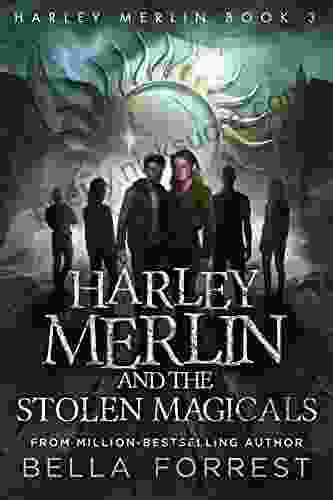
 Samuel Taylor ColeridgeHarley Merlin and the Stolen Magicals: A Spellbinding Adventure Through a...
Samuel Taylor ColeridgeHarley Merlin and the Stolen Magicals: A Spellbinding Adventure Through a...
 Brayden ReedPopular Vintage Wisdom For Modern Geeks: Unlocking the Timeless Treasures of...
Brayden ReedPopular Vintage Wisdom For Modern Geeks: Unlocking the Timeless Treasures of... Rob FosterFollow ·17.8k
Rob FosterFollow ·17.8k Steven HayesFollow ·5.8k
Steven HayesFollow ·5.8k Branden SimmonsFollow ·7k
Branden SimmonsFollow ·7k Billy PetersonFollow ·3.1k
Billy PetersonFollow ·3.1k Gavin MitchellFollow ·18.4k
Gavin MitchellFollow ·18.4k Patrick HayesFollow ·16.8k
Patrick HayesFollow ·16.8k Enrique BlairFollow ·4.2k
Enrique BlairFollow ·4.2k Kenzaburō ŌeFollow ·5.6k
Kenzaburō ŌeFollow ·5.6k
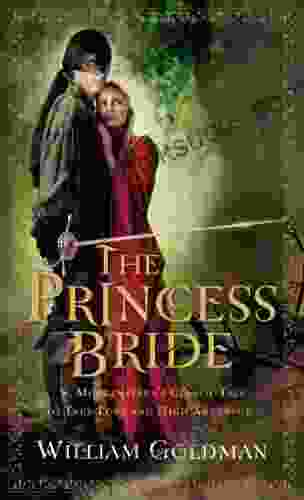
 Aldous Huxley
Aldous HuxleyMorgenstern: A Classic Tale of True Love and High...
Morgenstern is a...

 Beau Carter
Beau CarterThe Oasis Guide to Asperger Syndrome
What is Asperger Syndrome? Asperger...
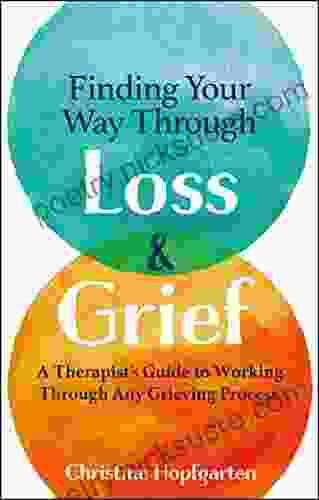
 Chadwick Powell
Chadwick PowellFinding Your Way Through Loss Grief: A Therapist S Guide...
Grief is a natural human emotion that we...
4.4 out of 5
| Language | : | English |
| File size | : | 8744 KB |
| Text-to-Speech | : | Enabled |
| Screen Reader | : | Supported |
| Enhanced typesetting | : | Enabled |
| Print length | : | 412 pages |


